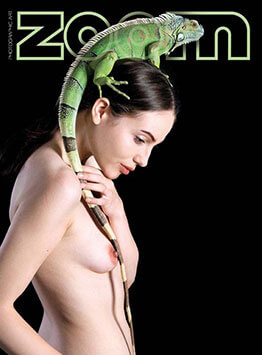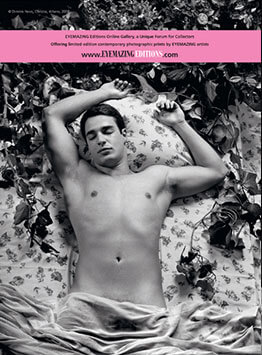Peter Weiermair
De-ranged Beauty
In her standard work of the seventies The Nude Male: A New Perspective, Margaret Walters wrote that the naked man is a forgotten subject in art. In the two decades since JL then, this has changed substantially owing to the erotic but, above all, the sexual emancipation. Male pin-ups, a distinct concentration on advertising, as well as numerous publications of photographers’ works dominate the market of public and private photography. In most cases, however, artistic innovation is insignificant and, rather than the type or style of the pictures, it is their content that fascinates the spectator and attracts him to an advertisement or makes him buy a book. In many cases old aesthetic forms are simply taken over and modified. Rare are the innovative concepts that might denote some progress in the history of the genre of photography.
Under the ambiguous title Theory of the Nude,1 the Greek artist Dimitris Yeros, whose surrealist paintings are already well-known, presents here a collection of photographs which, with their particular attitude, staging and concept, stand out against what has been flooding the market. The title may suggest a textbook, yet this is a book that deals with the exceptions rather than the rules. Yeros’s pictures constitute an interesting and remarkable contribution to the history of contemporary staged photography. His models are not out of the ordinary. In their respective age groups –boys, adolescents, adult males– he recruits them from a circle of friends, whom he asks to pose for him. As the term “pose” is introduced here for the first time, we should keep it in mind while looking at his
pictures, because it lies in the centre of his artistic conception. We should also keep in mind that the contemporary eye is stamped by irony, an irony that deals critically even with the iconographical repertoire of classical art. Of course, Yeros, being a Greek, is familiar with the classical tradition of his country’s sculpture. He has, on countless occasions, studied the attitude of the dangling or the supporting leg, and observed the uncovered beauty that radiates from the depths of history to this day, the glorified body of the Attic youths raised on a pedestal. His presentations are in this classical, but also European-classicist tradition that extends to the metaphysical photography of a Herbert List. Yeros, however, does not adopt the position of the Russian Neoclassicist school of St Petersburg of the nineties and its ironic neoacademism. He renounces the open and quiet counterpoised postures and stages the body in functionally undecided, surrealistic attitudes. The body plays here with a pedestal or a couch, a table or a chair, and thus presents itself from unexpected visual angles. What is more, Yeros disposes the body in analogy to dead or living objects. The physiognomies of the dog, the cat or the hen are significant in relation to the chosen models. The bodies are deranged but they are also reconciled. With the still-life relation of body and animal, the artist creates intentional analogies. The acts extend from a figure picking up apples from the ground, with its possible reference to a famous painting by Guercino, to the weird scene of a youth’s chest covered with snails that bears Hitchcock-like features. Now and again erotic connotations play an essential part. The humour is sometimes rough like a folksong, for instance where the model blocks with his bottom the opening of a jar that imprisons him; elsewhere, it is more subtle and complex when the semantic significance of the body and the flower are combined. The flower is after all a metaphor for sexuality, or at least has been so since Robert Maplethorpe.
Yeros always displays the whole figure; he illuminates it carefully and arranges it in dreamlike hallucinatory scenes. The shots remind of a magician’s performance, calling to mind short surrealistic dramas that make do with very few symbolic requisites; sometimes, though, they remind of complicated ballets frozen in action by Yeros.
More than once concepts are central to his photographic series and single shots: the concepts of playful ostentation, of irony and also of metaphor. His work is inspired by the idea of an erotic ritual that has no sexual aim, just an erotic process that can expect its fulfilment only in the picture itself.
Prof. Peter Weiermair
Former director of the Frankfurt Kunstverein, Director of the Museum of Modern Art, Bologna, and Museum of modern and contemporary Art, Salzburg.
1 Where “theory”, in its earlier Greek sense, is also the pure optical viewing of a thing. Thus, with an intelligent play on words, the visual artistic contemplation of the nude becomes its theoretical synopsis at the same time: namely, the systematic suggestion by the photographer of how to look at a male nude.









































